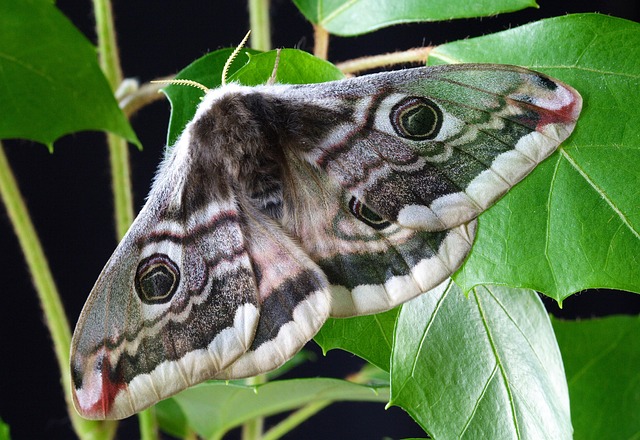Moth infestations can cause significant damage to fabrics, carpets, wood, and paper products in homes and businesses due to larvae feeding habits and stealthy nature. Professional moth extermination is crucial for effective eradication as these insects often occupy hard-to-reach areas. Early detection minimizes damage, health risks, and costly replacements. Experts use specialized equipment, advanced techniques like thermal imaging, and safe treatments for thorough results. They also offer ongoing monitoring and maintenance plans, preventing future infestations through regular inspections. Combining professional services with strategic post-extermination measures creates a barrier against long-term pest protection.
Moth infestations can quickly turn into a home or business owner’s worst nightmare, causing significant damage to fabrics and structures. Understanding these stealthy invaders and their impact is crucial. This article delves into the world of moth infestations, offering insights on how to identify them through thorough inspections. We explore the expertise of professional moth extermination services and the diverse methods they employ for effective locational and remedial measures. Learn essential post-extermination steps to prevent future invasions.
Understanding Moth Infestations and Their Impact
Moth infestations can quickly turn from a minor annoyance to a significant issue, especially if left untreated. These insects are attracted to various materials in our homes and businesses, including fabrics, carpets, wood, and even paper products. Their larvae feed on these substances, causing extensive damage over time. Professional moth extermination is often required to eradicate infestations effectively due to their stealthy nature and the hard-to-reach areas they tend to inhabit.
The impact of a moth infestation can be severe. Besides the visible destruction caused by larvae, moths also leave behind webby strands and a distinctive musty odor. In extreme cases, infested items may need to be discarded, leading to costly replacements. Moreover, moths are known carriers of allergens and fungi, posing potential health risks to those with sensitivities or respiratory conditions. Recognizing the signs of an infestation early on is crucial for minimizing damage and ensuring a healthy environment.
The Role of Professional Moth Extermination Services
When dealing with moth larvae and damage, especially in large or hard-to-reach areas, professional moth extermination services offer a valuable solution. These experts are trained to identify signs of infestation and employ specialized equipment and treatments that are effective yet safe for both people and pets. By utilizing advanced techniques like thermal imaging to locate hidden larvae and applying environmentally friendly chemicals when necessary, professional exterminators ensure thorough and lasting results.
In addition to their technical expertise, these services provide peace of mind by offering ongoing monitoring and maintenance plans. Regular inspections help catch potential issues early, preventing costly repairs and minimizing the impact on your property. In terms of moth extermination, relying on professionals ensures a more efficient, effective, and hassle-free process for homeowners or businesses dealing with infestations.
Methods Used for Locating Moth Larvae and Damage
Professional moth extermination often involves a multi-step process to effectively locate and eliminate moth larvae and any resulting damage. One common method is visual inspection, where experts carefully examine areas prone to moth infestations, such as attics, carpets, and furniture. This includes looking for signs of larvae, webbing, or frass (larval waste), which can indicate the presence of an active infestation.
Additionally, professionals may employ specialized tools like black lights and moisture meters. Black lights can reveal the presence of moths and their larvae by highlighting their luminescent trails. Moisture meters are crucial because moths are attracted to humid environments; identifying areas with excess moisture is key in locating nests and sources of damage. These methods, when used together, provide a comprehensive approach to detecting moth larvae and mitigating potential harm caused by these pests.
Preventing Future Infestations: Post-Extermination Steps
After successfully locating and eradicating moth larvae, a comprehensive post-extermination strategy is essential to prevent future infestations. Professional moth extermination experts often recommend several key steps. Firstly, sealing entry points like cracks, gaps, or openings in walls, floors, and ceilings can deter new moths from entering. It’s crucial to inspect and replace any damaged or compromised materials that might have attracted the moths in the first place.
Additionally, maintaining a clean and clutter-free environment significantly reduces the risk of reinfestation. Regularly vacuuming and laundering fabrics, especially items stored for extended periods, helps remove any remaining moth larvae or eggs. Using natural repellents like lavender, cedar, or tea tree oil can also provide an extra layer of protection. These steps, when combined with professional intervention, create a robust defense against moths, ensuring your space remains free from these pests.
Thorough inspections, coupled with professional moth extermination services, are key to managing infestations effectively. By understanding the methods used to locate larvae and damage, homeowners can prevent future intrusions. Post-extermination, implementing preventive measures ensures a cleaner, pest-free environment, making your home a safe haven once again.
